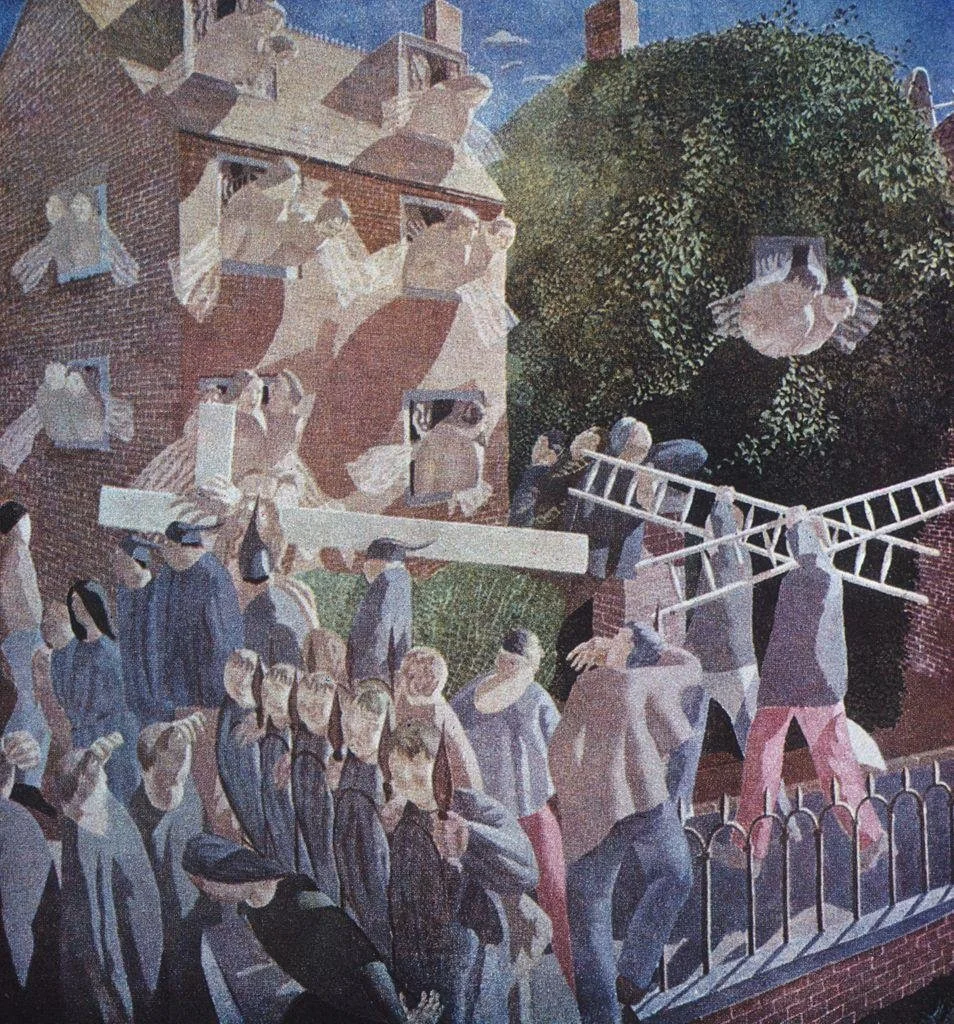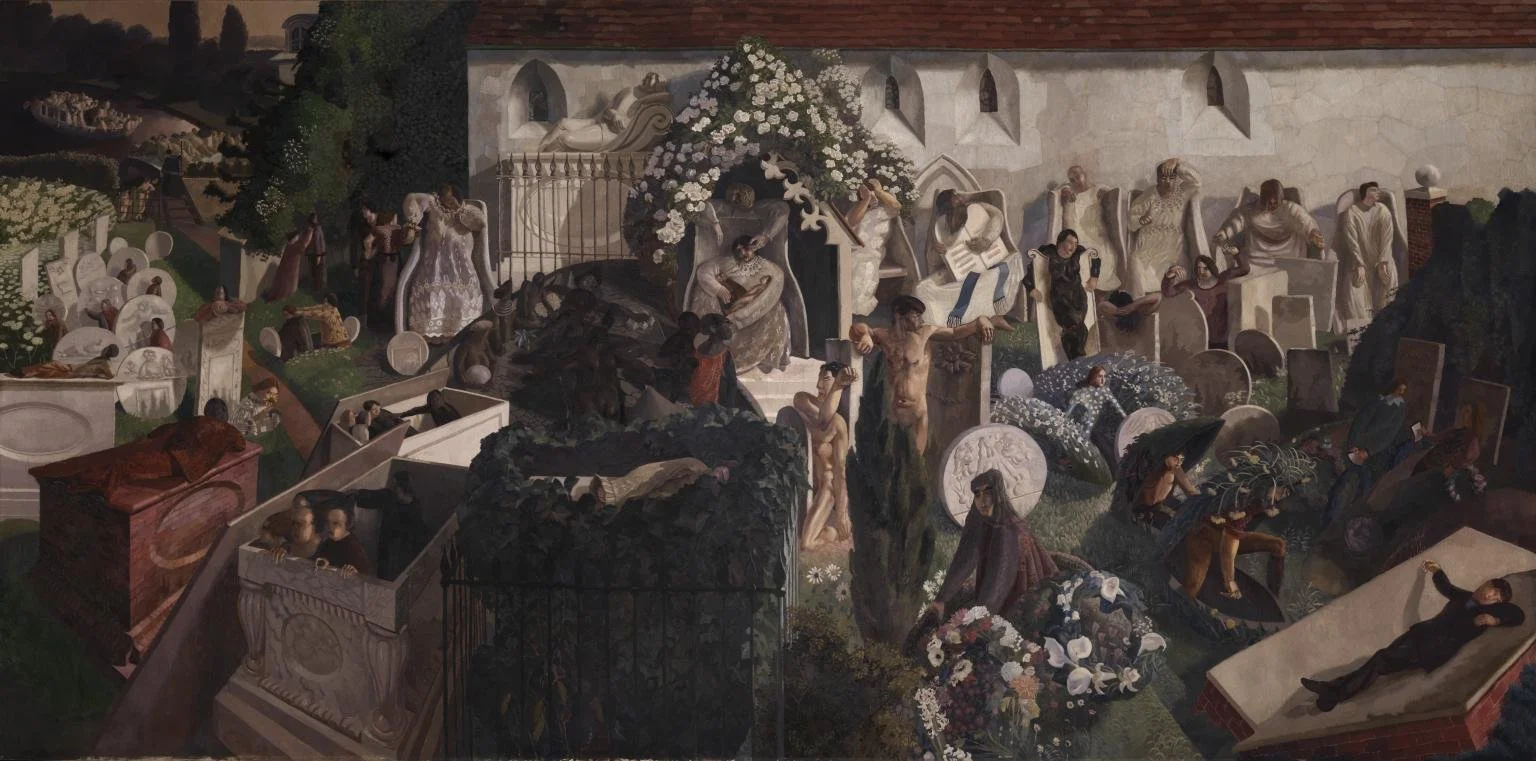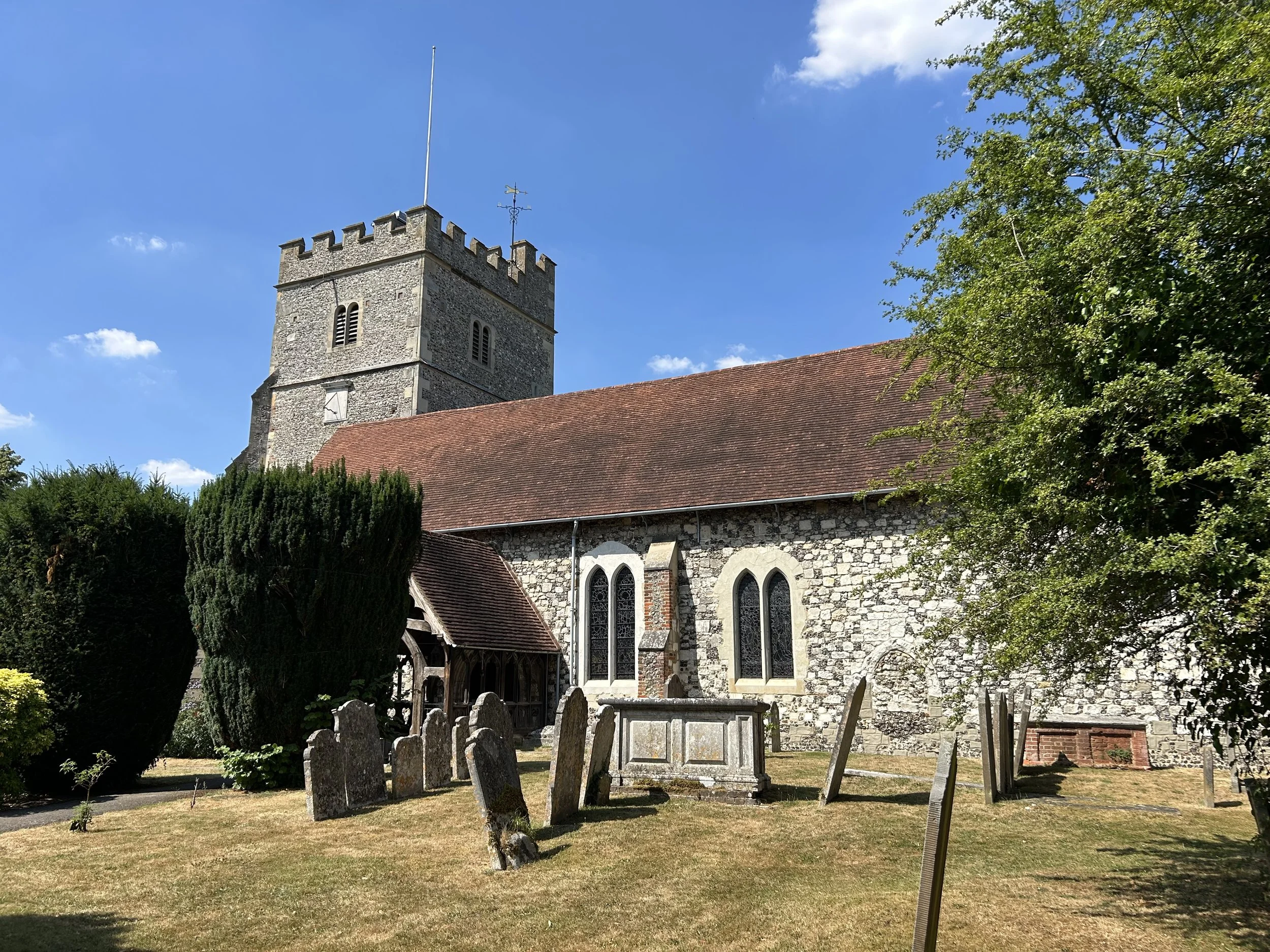During my trip to England last week, I made a point to visit a small town called Cookham. Located along the River Thames in Berkshire about 45 minutes from central London, it was in Cookham that the artist Sir Stanley Spencer (1891-1959) spent much of his life. Spencer was in love with Cookham, and saw this little town with its old parish church—Holy Trinity—as a “village in heaven.”[1] Spencer’s canvases are often whimsical, curious, and packed with figures. And they are always colorful and infused with a certain vibrancy which must only come from his love for, and sensitive observation of, the world around him. Many of his pictures are scenes from the life of Christ and the Bible transposed to the streets of Cookham and the local countryside. It seems that Spencer thought it was perfectly natural that the great events of salvation should be shown in a small Berkshire town, where Jesus Christ might be depicted preaching from a busy boat on the Thames or where Spencer’s wife, Hilda, might be shown alongside Moses at the last day.
I include here two of my favorite pictures. The first, Christ Carrying the Cross (1920), shows the road to Calvary as passing by a friend’s house in Cookham. Christ is barely visible behind the various onlookers. Notice how the crossed pair of ladders echo the cross itself in a kind of sacred rhythm, showing forth the sanctification of the ordinary. Spencer’s desire to show the road to Calvary as something so integrated into village life did not arise from a lack of seriousness. Rather, as he put it, “Christ had made everything wonderful and glorious,” and he believed that he might “be able to join in that glory.”[2] Indeed, there is something both beautiful and intensely painful to me that the suffering of the cross should be made so ordinary. Our attentiveness to actually seeing Christ in this picture—looking as though he were another resident of Cookham—seems to visualize the visceral reality of everydayness that comes with the fulness of Incarnation.
Christ Carrying the Cross. Sir Stanley Spencer, 1920
That everydayness may include the reality of suffering and pain and our call to respond to it as followers of Christ Jesus. And that everydayness may include the possibility and reality of knowing that not one thing is beyond the transfiguring light of Christ—even now. The second picture, The Resurrection, Cookham (1924-26) might be said to take up this latter theme. Here, we see the resurrection of the dead at the last day as taking place in the churchyard at Holy Trinity. The vast expanse of the church’s chalk and limestone wall spans the top of the picture, and all around all sorts of people emerge from their graves in various attitudes of praise, bewilderment, calm, and joy. Along the church wall, too, are seated various Old Testament figures. And Jesus Christ himself is shown as a nursing mother under the white rose covered church porch. A pale and all-consuming light comes from the east; as it moves across the picture it seems we can almost feel the crescendo of life that is emerging from the churchyard. On the left side, very near the people emerging from shell-like tombs, we find a mother brushing off her son’s coat as she would at the start of any new school day. The smallest acts of love have been taken up, and continue, in the Resurrection light.
The Resurrection, Cookham. Sir Stanley Spencer, 1924-1926
Of course, I spent some time at Holy Trinity. Under the hot and indiscriminate light of the summer sun, washing everything out with its brightness, I think that The Resurrection, Cookham did come to life. Spencer’s pictures helped me to see the possibility and reality of resurrection even now. Something familiar and present (me standing in the churchyard on a summer’s day in 2025) was transformed through Spencer’s ability to convey in paint a kind of vision which sees the pulse of the divine in the world we know.
None of this is removed from our life here at Good Shepherd. For, in one way or another, every time we come to this place we are reattuning ourselves to see the world as alive with the intense reality of God’s Incarnate being. To me, Spencer’s pictures seem to articulate in another way the words with which we begin every Mass: “Blessed be God: Father, Son, and Holy Spirit. And blessed be his kingdom, now and for ever.” Spencer, enraptured with seeing the immediate world around him as replete with God’s action, conveys something of the urgency of the Gospel call to realize this Kingdom that is mysteriously now and to come. We are, of course, profoundly blessed at Good Shepherd with a beautiful church and lush grounds (it has become one of my favorite pastimes here to sit on the porch in the morning and watch the light fall across the flowers and ferns by the Lady Chapel). And a beautiful community that—as I have discovered more and more—is so dedicated to the flourishing of this place. And likewise, Spencer’s Cookham and Holy Trinity Church are very beautiful places. It might be tempting, then, to hear all this talk of seeing the divine as a trite or sheltered; it is much more easily done, probably, in pretty places than in unpleasant ones.
Church of the Holy Trinity, Cookham
But I think that Spencer’s eye is, in fact, rooted in a real awareness of the fulness of life. Indeed, Spencer had known first-hand the realities of the First World War during time on the front in Macedonia, to say nothing of the personal travails around his own divorce and remarriage, for instance. Perhaps in some ways it was his deep awareness of the pains of life that enabled him to cling even more closely to the reality that God was present in his beautiful village, in the people and places he loved so much. To proclaim in his own way the blessedness of God’s kingdom now and for ever was not a veil over life’s ugliness or pain. Rather, it was proclaiming boldly a trust, a vision, in the real presence of the ageless, Incarnate God who has met and will meet us precisely in the world we know.
John Hager
Summer Seminarian Intern
[1] Sir Stanley Spencer CBE, RA (1891-1959). Webpage:
< https://www.cookham.com/about/biographyold.htm >
[2] Stanley Spencer RA (Exhibition catalogue). The Royal Academy of Arts, London. London: Weidenfeld and Nicholson, 1980; p. 62.



